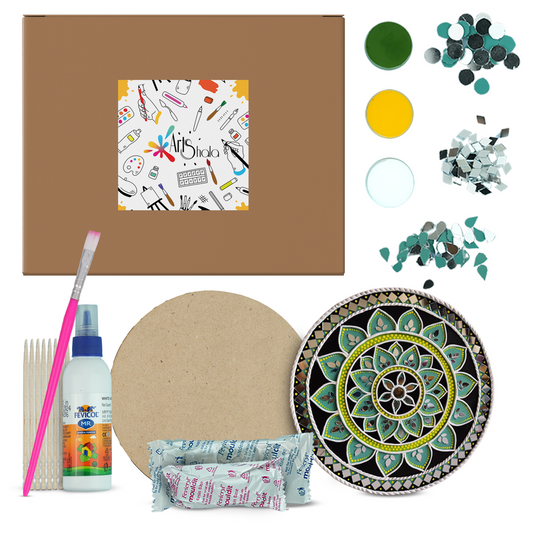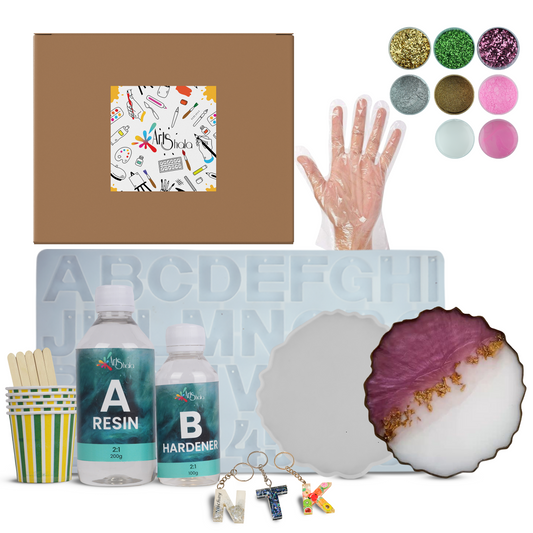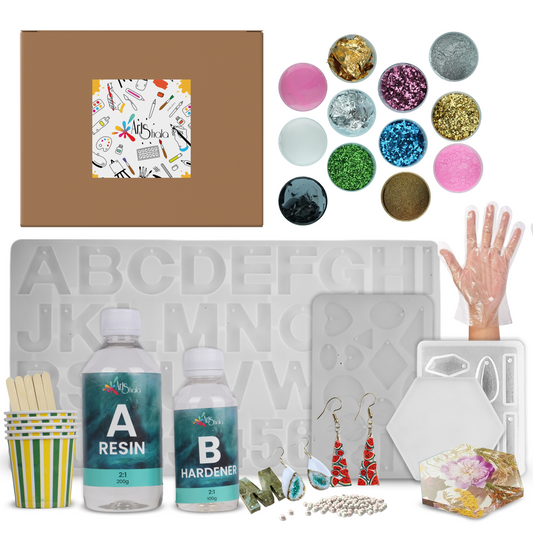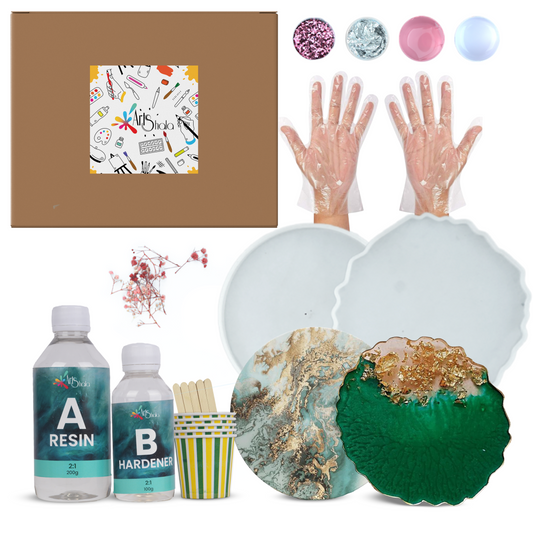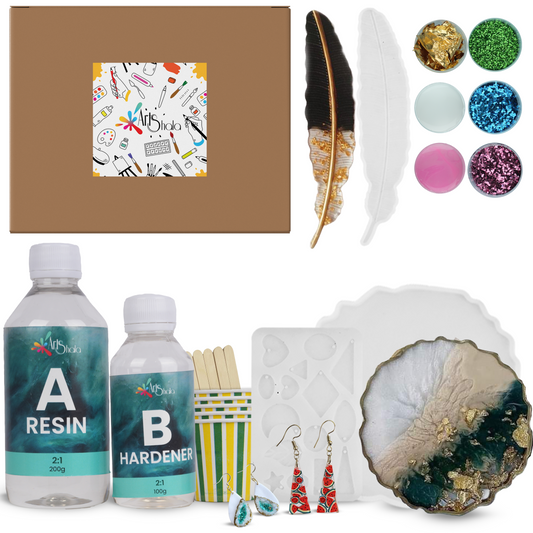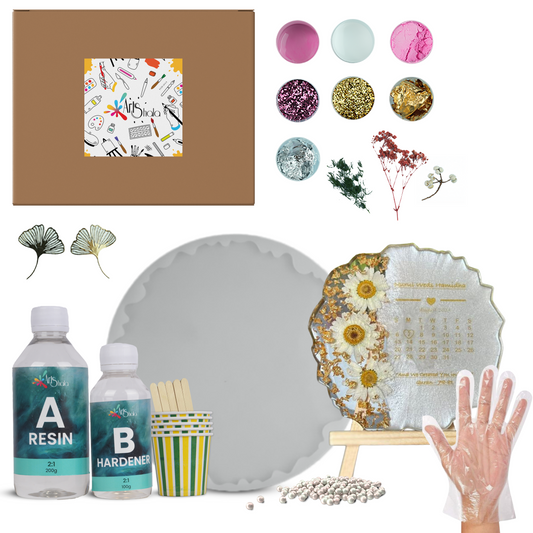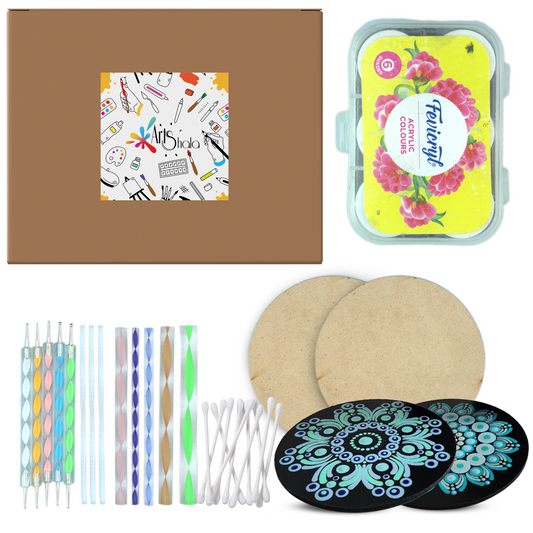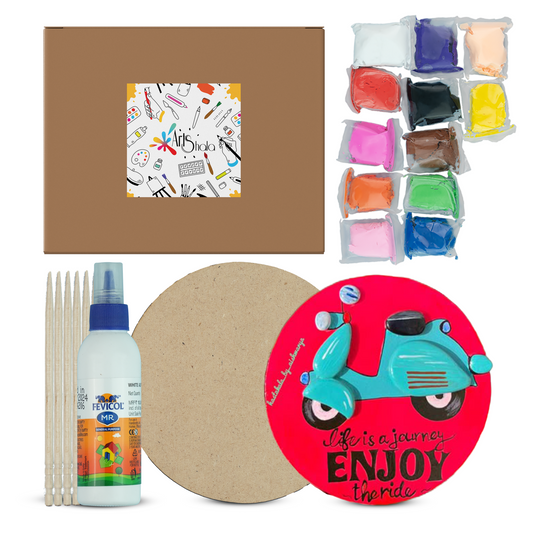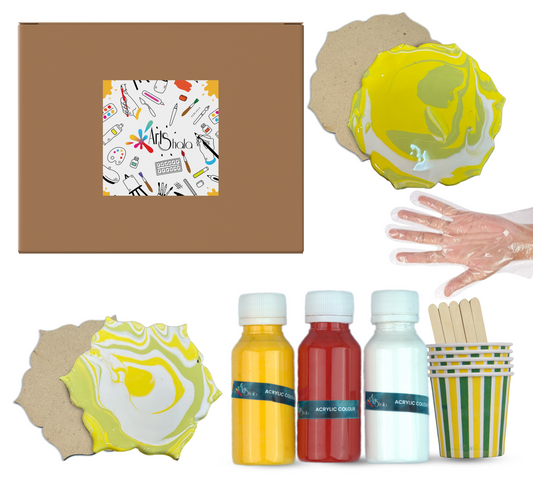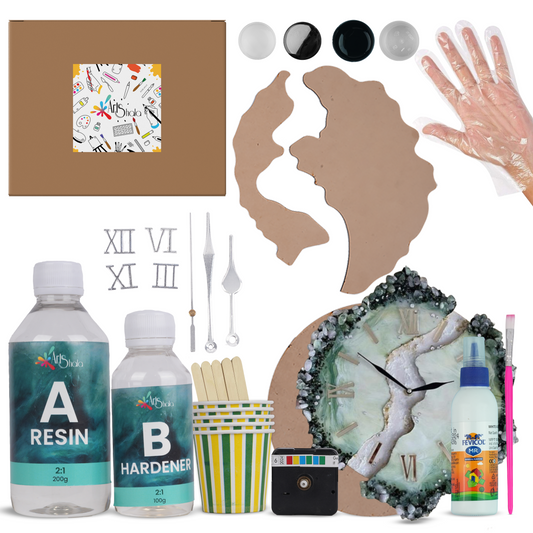How to Use Acrylic Colours on a Paper Drawing Sheet?
Acrylic painting is a popular form of art that allows artists to express their creativity using vibrant and versatile colours. While acrylics are often used on canvas, they can also be effectively used on paper drawing sheets. If you're new to acrylic painting or want to improve your skills, joining an acrylic paint workshop can be a great way to gain hands-on experience using acrylic paint on drawing paper. These workshops provide valuable insights into the techniques and methods used by experienced artists, helping you develop your unique style. In this blog, we will discuss how to use acrylic colours on a paper drawing sheet and provide you with some tips and techniques to enhance your acrylic painting experience. So, let’s get started!
Choosing the Right Paper for Acrylics
When using acrylic colours on a paper drawing sheet, choosing the right paper for the best results is essential. Here are some key points to consider:
1. Importance of selecting the appropriate paper surface:
The type of paper you use can significantly affect your acrylic painting. It affects how the paint sticks to the surface and how colours look once applied.
2. Understanding the concept of 'tooth' in relation to paper and how it affects acrylics:
"Tooth" refers to the texture or roughness of the paper's surface. A paper with more tooth provides a better grip for the paint, allowing for richer colour application and more pronounced brushstrokes.
3. Recommended types of paper for the best results with acrylic paint:
Heavyweight art paper specifically designed for use with acrylic paints is highly recommended. Look for papers labelled as suitable for acrylics. Additionally, hot press paper is ideal due to its smooth texture, which allows for smoother paint application.
Choosing the right paper with adequate weight and tooth can enhance your painting experience and achieve excellent results when using acrylic colours on a paper drawing sheet.
Preparing Your Paper for Acrylics
Before you start applying acrylic colours on a paper drawing sheet, it is essential to prepare the surface properly. Priming or sizing your paper helps to create a suitable foundation for the paint and prevents it from being absorbed too quickly. Here is a step-by-step guide on how to prime or size a paper surface for acrylic painting:
1. Gather your materials
-
Paper: Use heavyweight art paper designed for use with acrylics.
-
Gesso: Get a container of acrylic gesso, which acts as a primer.
-
Paintbrushes: Use synthetic brushes suitable for acrylic paint application, preferably ones that minimise the texture of the canvas.
2. Prime the paper
- Shake the container of gesso well before opening it.
- Using a wide brush, apply an even layer of gesso to one side of the paper.
- Start from the top and work your way down in smooth strokes.
- Allow the first side to dry completely before flipping it over and priming the other side.
3. Apply additional coats (optional)
-
You can apply multiple coats of gesso for added texture and tooth if desired.
-
Make sure each coat is fully dry before you apply the next one.
4. Sand the surface (optional)
- If you want a smoother surface, lightly sand the dried gesso with a fine-grit sandpaper.
5. Check for any imperfections
- Inspect the primed surface for any bumps or uneven areas.
- Sand them down gently if needed.
6. Let it cure
- Allow the primed paper to cure for at least 24 hours before applying acrylic paint.
By following these steps, you will have an adequately primed paper surface ready for acrylic painting. Priming the paper prevents the paint from seeping through and provides a better surface for the colours to adhere to, resulting in more vibrant and long-lasting artwork.
Applying Acrylic Colours on Paper
While applying acrylic paint on paper, there are various techniques that can be used to achieve different effects. Here are some key points to consider:
Brush Techniques
Experiment with different brush movements and application methods, such as stippling, dry brushing, or using a palette knife to create texture and a sense of depth in your acrylic paintings.
Layering and Blending
Explore the versatility of acrylics by layering colours to create depth and blending them together to achieve smooth transitions and gradients.
Glazing
Utilise the glazing technique by applying thin, transparent layers of acrylic paint to build up colour intensity and create luminous effects on your paper surface.
Impasto Effects
For a more textured and three-dimensional look, consider using the Impasto technique by applying thick layers of acrylic paint with a palette knife or brush.
By experimenting with these techniques, you can express your creativity and discover unique ways to express yourself through acrylic painting on paper. Remember to let each layer dry before you apply the next to avoid muddying the colours and maintain the integrity of your artwork.
Fixing and Protecting Your Acrylic Paper Artwork
When you've finished your acrylic painting on paper, protecting it for long-term preservation is crucial. Here's how you can fix and safeguard your beautiful artwork:
1. Varnishing
Applying a varnish to your acrylic painting helps protect it from dust, dirt, and UV rays. It also enhances the colours and provides a uniform finish. Here are the steps to varnish your artwork:
- Use a soft paintbrush to apply the varnish in thin, even coats, allowing each layer to dry completely before applying the next.
- Consider using a removable varnish if you anticipate cleaning or restoring the painting in the future.
2. Fixative Spray
Fixative spray is handy for securing charcoal, pastel, or graphite elements within your acrylic artwork. Here's how you can use fixative spray effectively:
- Shake the can well.
- Hold it at least 12 inches away from your artwork.
- Spray in a sweeping motion to ensure even coverage.
By varnishing and using fixative spray, you can ensure that your acrylic paper artwork remains vibrant and protected for years.
Conclusion
Using acrylic colours on a paper drawing sheet opens up many creative possibilities. Acrylic painting on paper offers a unique blend of versatility and beauty that can enhance your artistic expression. While paper is an excellent choice for acrylic painting, don't limit yourself! Explore using acrylics on canvas or wood panels to create diverse artistic effects. Each surface has its characteristics that can add depth and texture to your artwork.
So, explore the potential of acrylic colours on a paper drawing sheet. Let your imagination run wild as you create stunning artworks that showcase the vibrancy and expressive nature of acrylic painting. If you want to learn more about acrylic painting, Contact Us on Arts Shala today for workshops and classes where you can gain valuable experience and learn more about acrylic techniques from experienced artists.



